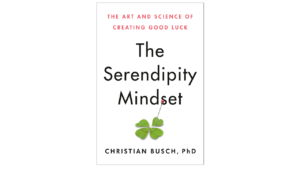Languishing is the Verb of the Month . . . And Your High Performers Know It
Do You Feel This Way?
Frustrated yet kinda focused. Working but not as productive as before. Not depressed yet not really happy. Lost in thought and really looking forward to another night on the couch with Netflix.
I hear the above from CEOs, founders, VPs, new managers, individual contributors, friends, neighbors . . . most everyone.
Does any of it sound familiar to you?
Adam Grant’s recent New York Times piece is a “don’t miss it you’ll love it” article.
Yes, I need less trite language to express how important this piece is you, your team, and your company. Anyway, please read it.
Grant, author of Give and Take, writes about this funk we’re all in.
It’s not burnout or depression or hopelessness, but it’s definitely something.
Here’s what it is: languishing.
Languishing was coined by Corey Keyes, a sociologist who was trying to figure out why people who weren’t stress weren’t thriving either. They were stuck.
Adam writes, “Languishing is a sense of stagnation and emptiness. It feels as if you’re muddling through your days, looking at your life through a foggy windshield. And it might be the dominant emotion of 2021.”
To me, languishing is definitely the dominant emotion of 2021.
“Part of the danger is that when you’re languishing, you might not notice the dulling of delight or the dwindling of drive. You don’t catch yourself slipping slowly into solitude; you’re indifferent to your indifference. When you can’t see your own suffering, you don’t seek help or even do much to help yourself.”
Grant’s article makes me feel better and also helped confirm that I’m helping clients do the right things. I hope you check it out.
And, here’s how you can begin to wrestle that feeling of languishing out or away (and Adam discusses these steps and more in his piece).
- Name it. Give what you feel a name.
- Identify what you like and do more of it to get closer to being in the “flow.” More on flow below.
And the connection to your high performers?
Well, they are (sigh) most likely languishing, too. So, you need to figure that out.
A Quick Reference Card on Flow
- The thinker behind the concept of flow: Mihlay Csikszentmihalyi, Claremont Graduate University’s Distinguished Professor of Psychology and Management.
- His Ted speech on flow and happiness. 18 minutes. I think it’s worth it.
- Csikszentmihalyi’s book on flow.
Martin Seligman also does work in this area and has collaborated with Csikszentmihalyi. Check out Seligman’s work on positive psychology and the PERMA theory of well-being.
Animals Help Leaders Learn (Not Exaggerating)
I don’t use people—photos or cartoons or images—in my training and coaching program.
Curious how the Awesome Leader animals came about and why? Read why animals help managers learn to be awesome.
The turtle, sloth, bull, ostrich, donkey, and bear aren’t just for fun.
They help managers and leaders to consider their behaviors and actions in a tangible, thoughtful, and fun way.
Once you learn more about the Awesome Leader ecosystem, you’ll start to see animals in logos everywhere. They work.
Leadership is Difficult, Confusing, and Needs to Be Pushed
Leadership is tough. I want to make it easier.
Sometimes that means making you feel . . . peeved.
That’s not my goal.
My goal is to help you think more about what you do as a leader.
To get you thinking more and more often about being a leader.






